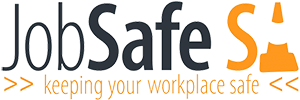Construction
Construction is any work done in connection with the construction, alteration, conversion, fitting out, commissioning, renovation, refurbishment, decommissioning or demolition of any structure, or any similar activity. The main sectors of construction are:
- civil
- engineering
- residential
- commercial
INJURIES
56% of all construction workers will suffer some sort of musculoskeletal injury (an injury of the muscles, tendons, ligaments, joints that may be caused or aggravated by your work) due to stresses applied to the body during day-to-day activity. Incorrect manual handling procedures, poor ergonomic design and prolonged awkward posture can result in hernias, disorders of muscle tendons, disorders of the spinal vertebrae and strain and sprains of joints and adjacent muscles. Musculoskeletal and other general injuries that occur within the construction industry can be avoided through joint preventative measures:
- eliminate the hazards at the design stage
- consultation on any proposed changes or redesign of manual tasks
- education and training
- using the right tools and equipment
- working and lifting collaboratively
- hazard identification through:
– toolbox meetings
– first aid and accident reporting
– incident investigation
– injury statistics
- hazard identification through:
A musculoskeletal injury can affect your ability to perform your work. Early signs and symptoms can progress into conditions which can have long-term effects. If you feel any symptoms, do not hesitate to inform your supervisor. It is important that you report signs and symptoms of musculoskeletal injuries as early as possible. Follow the link for a Musculoskeletal Injury Prevention Program.
HAZARDS
Construction continues to have the second highest fatality rate of all industries, however many of these (30% of all fatalities) were from prolonged contact with chemicals or hazardous substances e.g. Asbestos. The three most common hazards in the construction industry include;
- manual handling (lifting, repetition, vibration and awkward positions)
- slips, trips and falls
- being hit by a moving object (traffic, plant)
Examples of common building-related hazards with solutions
Hazard
Exposure to falls: from working at heights, on the same level or injury from falling objects.
Example solutions
- Structural steel connections with extra perforations for temporary fixing during erection can increase stability and reduce risks of falls and falling objects.
- Handling systems for erecting columns can be designed so that slings are disconnected from ground level.
- Design building elements to be assembled at ground level and then lifted in to position.
- Column designs could include a perforation 950mm above floor level for immediately fixing handrails.
- Use pre-fabricated permanent stairways for immediate installation no need to build and use temporary access.
- Use pre-fabricated concrete panels, columns, beams etc to minimise manual handling of formwork, reinforcing steel and concrete construction, reduce exposure to falls from heights and minimise temporary access scaffolding.
- Group floor penetrations in one area and infill with porous concrete block work to minimise trips and slips.
- Design roof parapets 950mm high to act as a permanent guardrail.
- Design tops of guardrails for no storage to minimise risk of objects falling.
- Design building external maintenance operations to be done from ground level or from integrated gangways.
- Provide anchorage points fro building maintenance work and edge protection.
- Consider safe access for maintenance of lighting in stairwells.
Hazard
Exposure to electricity
Example solutions
- Bury overhead power lines at the start of construction to minimise the risk of contact.
- Design permanent electrical distribution systems so that they can be installed and used as early as possible, to reduce the need for temporary supplies or trailing cables.
- Design easy access for maintenance of electrical systems, and minimise the use of extension power cables.
Hazard
Movement of people and materials
Example solutions
- Design floors to be even, with no steps or sudden level changes to promote the use of trolleys and mechanical aids to move materials around the workplace.
- Separate pedestrian and vehicle traffic
- Include adequate storage areas for stock, trolleys, pallets and lifting aids, for both current and planned future needs.
Above taken from Building designers and owners – Worksheet No. 2: Workcover Corporation of South Australia, 2004
However due to the constantly changing nature of construction work the hazards are many and varied. Other hazards include:
| Noise | Plant/Machinery | Slips and Trips |
| Chemicals | UV Radiation | Asbestos |
| Heights | Electricity |
The high-risk work licence
This licence will now be in the form of photographic identification and training must be completed under a Registered Training Organisation (RTO) through the Australian Quality Training Framework (AQTF). You must be 18 years or older to hold a licence and it will be recognised nation wide. You will need to renew your license every 5 years.
- The high risk work licence is mandatory for people working with:
- Scaffolding – basic, intermediate and advanced;
- Forklift operation – forklift trucks; order-picking forklift trucks;
- Rigging work – dogging; basic, intermediate and advanced rigging;
- Crane and hoist operation – tower; self-erecting tower; derrick; portal boom; bridge and gantry; vehicle loading; non slewing mobile; slewing; materials hoist; personnel and materials hoist; boom-type elevating work platform; vehicle mounted concrete placing boom.
- Pressure equipment operation – basic, intermediate and advanced boiler operation; turbine operation; reciprocating steam engine operation.
Note:
Many companies have been found in breach of their OHS obligations to employees. Take an informative look at the successful convictions by SafeWork SA located on the SafeWork website.
ADDITIONAL INFORMATION
Managing the Risk of Falls – Code Of Practice
Acknowledgements
Worksafe Victoria – www.worksafe.vic.gov.au
Worksafe BC – www.WorksafeBC.com
